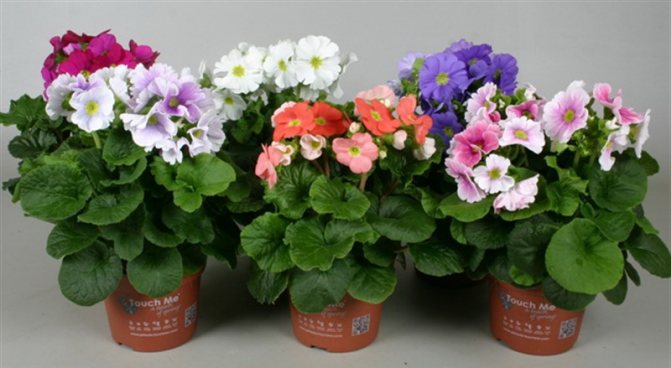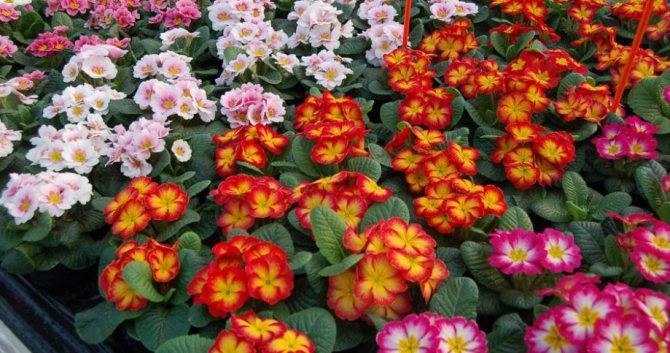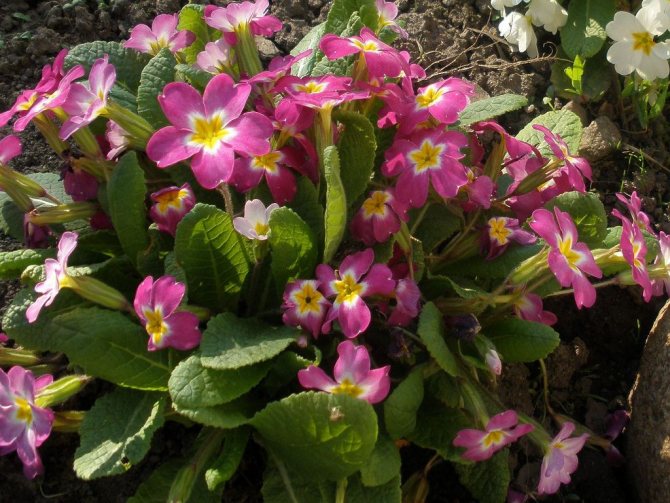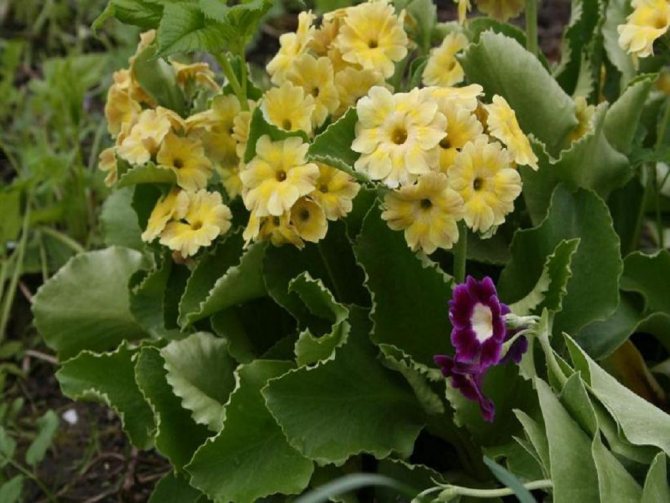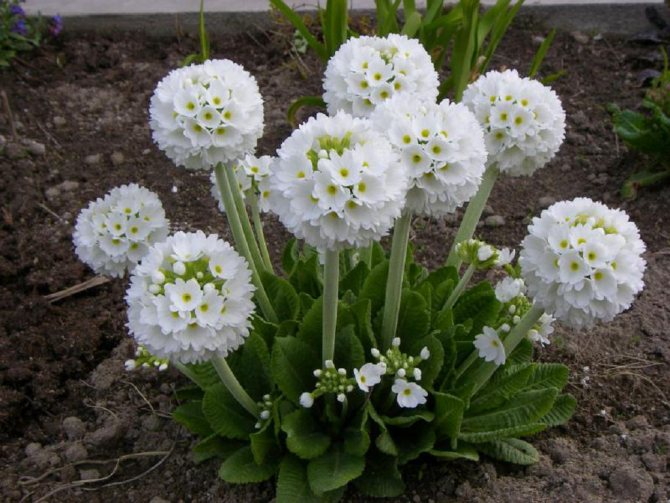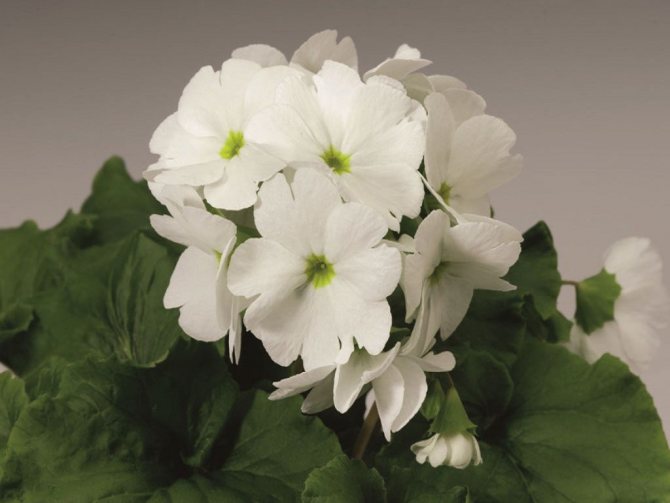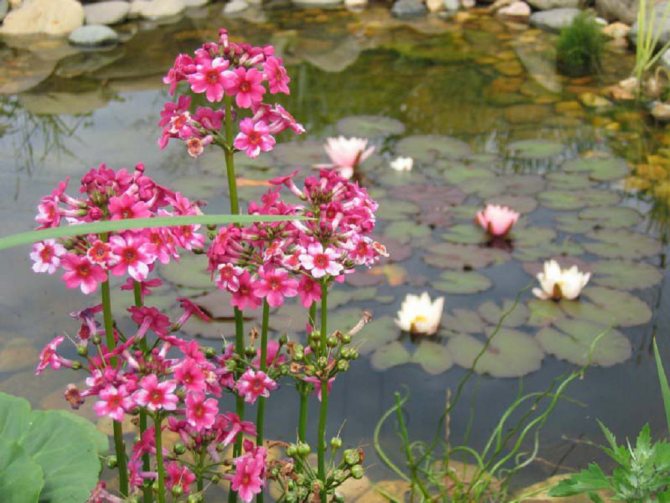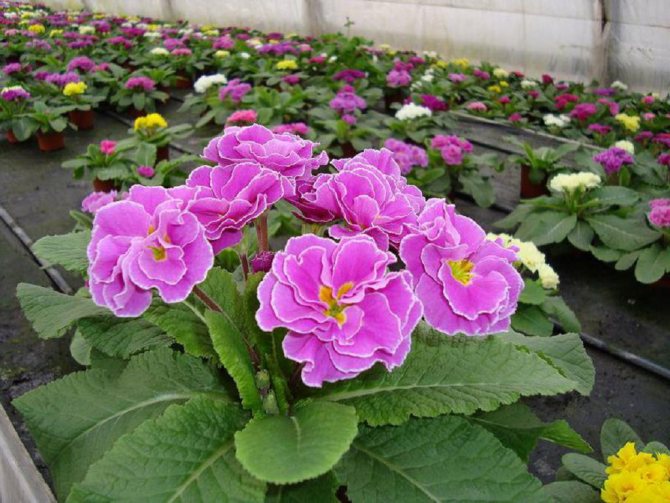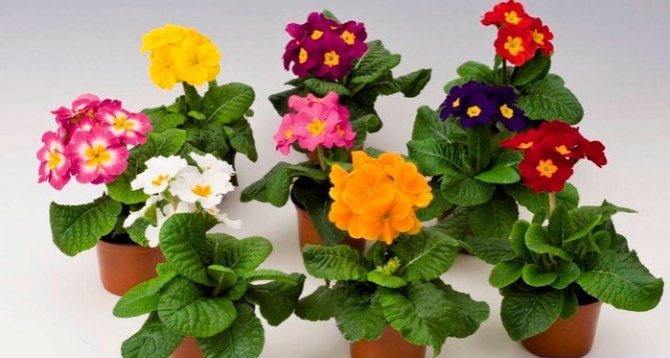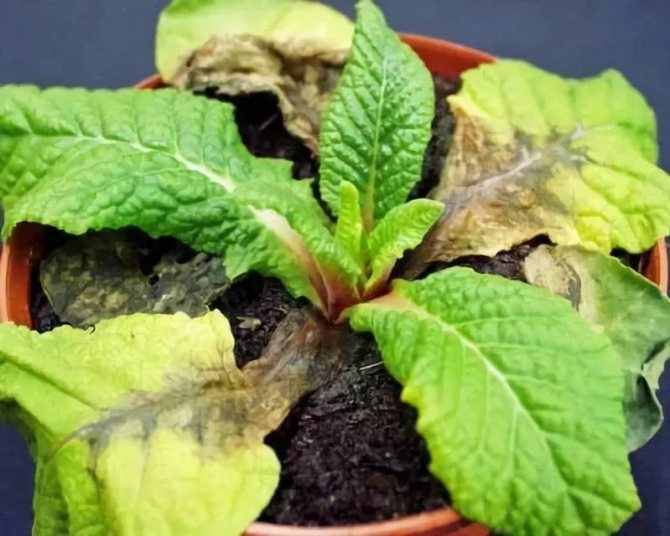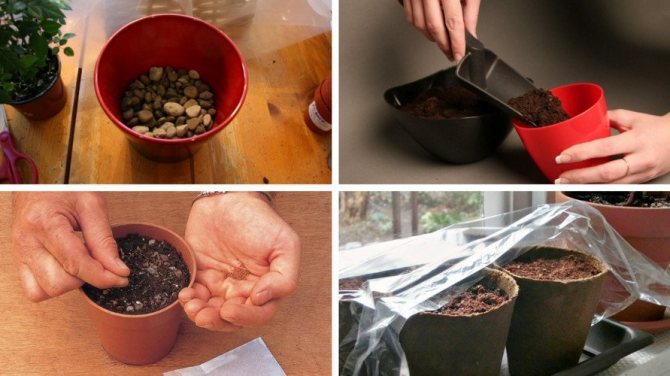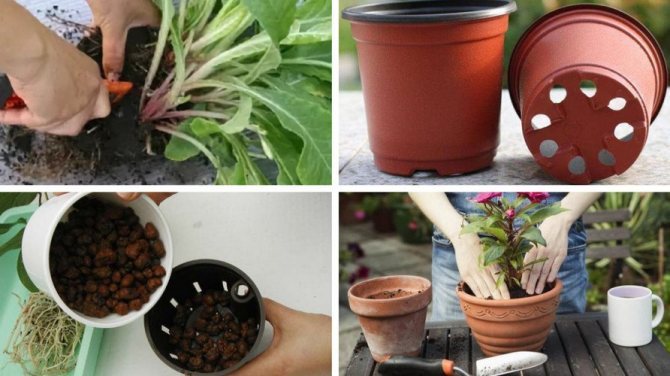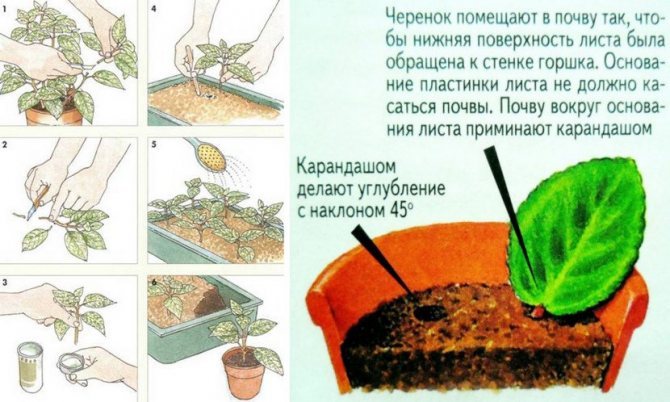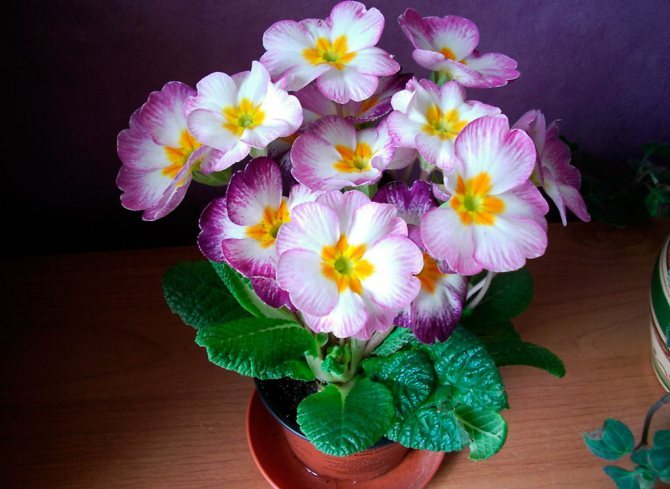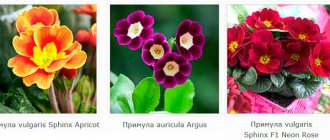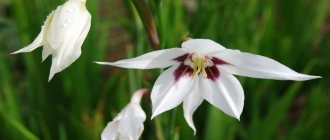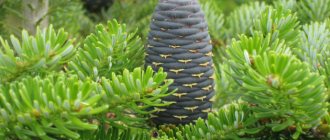Primula is a delicate flowering plant from the Primroses family. Its name can also be translated as "primrose". In its natural environment, the flower is found on the slopes of the Alps, as well as in the temperate climate of Eurasia and North America. A cap of delicate flowers on a low growth appears already in the middle of spring and lasts for a very long time. Today, primrose is grown not only in the garden, but also at home as a houseplant. There are many varieties with different flowering periods and appearance. Florists know how to make this beauty bloom at the right time, so for the holidays, pots of colorful primroses appear in abundance.
What it is?
Primrose or primrose is a plant that got its name because of the early flowering period, before the snow melts.
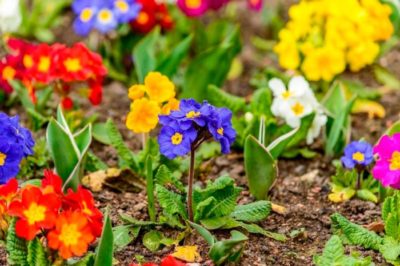
Primrose is basically a perennial, rarely biennial or annual plant with whole, wrinkled leaves forming a basal rosette. The leaves are pubescent. Flowers are five-membered, regular in shape, single or collected in racemose or umbellate inflorescences.
Most species of primroses are flowering low-growing grasses.... There are more than 500 species of primroses in nature.
Humidity
Primrose is not particularly demanding on air humidity, however, when kept in a room with dry and hot air, you will need to take measures to increase the humidity. Otherwise, the tips of the leaves will dry out.
To ensure favorable conditions, you can place containers with water around the plant.... As it evaporates, it will increase the humidity. Another option is to put the pot in a tray filled with moist sphagnum, expanded clay, or pebbles.
You should not spray primrose leaves, since they begin to deteriorate and rot from excessive moisture.
To increase the humidity, it is recommended to humidify the air around the flower pot from a fine-grained spray bottle.
Legends and mysterious stories
Attention: Translated from Latin, Primus means "first". The plant got its name due to the early appearance of flowers from under the snow that has not yet melted.
The plant is revered by residents of many countries. So, in Italy, primrose is called "the flower of the passion of Christ" and throughout the Holy Week the shroud and altars of churches are adorned with flowers.
For the British, primrose is a sacred flower... There is a legend that the one who manages to get a red variety of primrose growing in a remote mountainous area and decorate his home with it will be immensely happy all his life. If an Englishman has a kindergarten, then a primrose must be there.
Propagation by leaf cuttings
There is another option for obtaining new primroses bushes - leaf propagation. You need to choose a healthy plant and do the following:
- prepare a pot or container with peat and a layer of sand about 2 cm;
- with a sharp knife, cut off a leaf with a bud from a primrose;
- cut the sheet itself in half, the cut should turn out to be even;
- lower the sheet at an angle into the sand by about 1 cm;
- water and put in a cold place, not forgetting to water further.
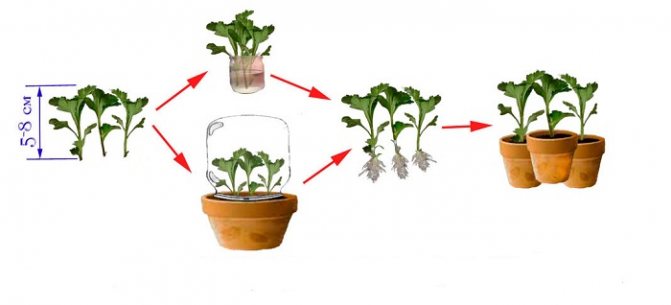

After three months, if everything was done correctly, 3-4 sheets will appear. Then it can be transplanted into a larger pot.
Description and photos of species and varieties
Room
The size of a room primrose usually does not exceed 25-30 cm. The main advantage of this plant is the flowers that form a dense cap. The color of the flowers is varied: yellow, blue, purple, pink, white, blue shades.
Abundant flowering is characteristic of the flower in winter and spring.... But with proper care, you can achieve year-round flowering.
The most common and favorite among flower growers are the following types of indoor primroses:
Soft-leaved
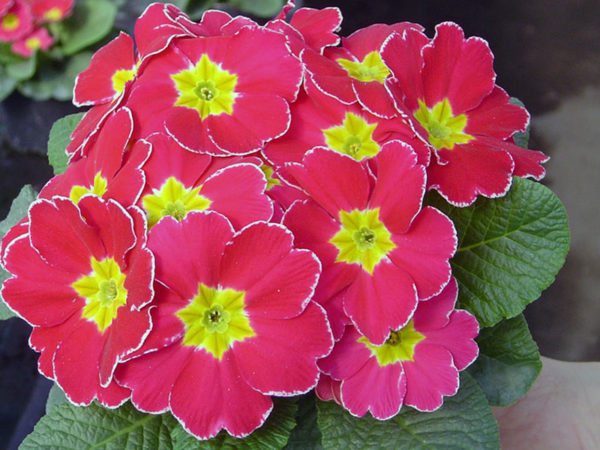

They are characterized by one basal rosette, light green, large, elongated leaves and inflorescences with 15-20 lilac, pink or red flowers. Peduncles are vertical. Flowering begins in early spring and lasts more than three months..
Reverse conical
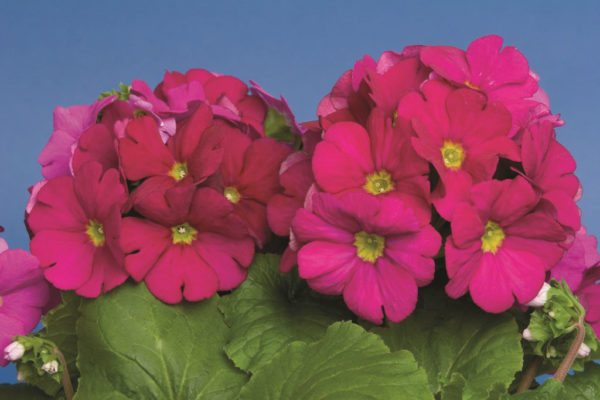

These primroses have elongated leaves of a beautiful emerald hue. Wavy along the edge. Peduncles are collected in umbellate inflorescences. The flowers are red, crimson, lilac, pink and white. The diameter of the inflorescences reaches 12 cm.
Common stemless
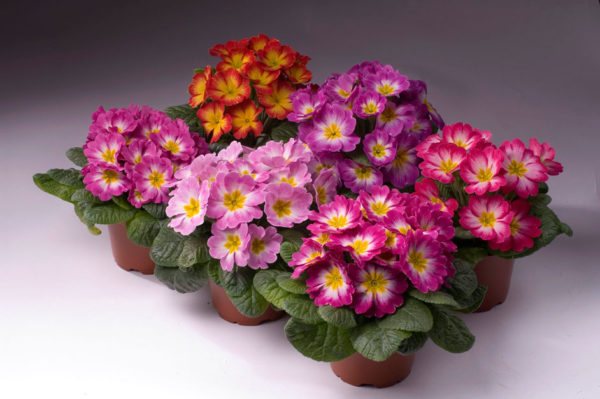

Miniature indoor species, not exceeding 20 cm in height. They have bright green leaves. Flowers are single, small, of various colors. Flowering begins in April and lasts four months.
Sadovaya
Of the many natural species in gardening practice, about a hundred are cultivated, as well as numerous hybrids bred by breeders. Severe climatic conditions with frosty winters are painlessly able to survive only about 30 varieties.
The most common species in our gardens are:
Ushkovaya


Easily tolerates severe winters and is undemanding to growing conditions... It has a dense rosette with fleshy evergreen leaves. Fragrant flowers are collected in an umbrella on a high peduncle. Blooms in May. Flowering lasts more than a month.
Ordinary


Winters well, easy to care for. It grows well, thanks to which it quickly forms a decorative pillow of double or simple flowers on low peduncles.
Fine-toothed


Characterized by spherical inflorescences and very early flowering lasting more than a month
Japanese


Refers to multi-tiered primroses. Flowers of various colors are arranged on the stem in several tiers. The plant prefers partial shade.
Florinda


A plant with 50-70 cm tall peduncles and inflorescences that look like hanging bells
Evening (Enotera)


This primrose has a straight, densely leafy stem up to 80 cm high. Flowers are yellow, four-petalled. This variety got its name because the flowers open in the evening and close in the morning.
Watch a video about the features of evening primrose (evening primrose):
Perennial


The advantages of perennial primroses are early and abundant flowering, a variety of colors, a pleasant aroma and winter hardiness. If you collect a collection of different species, you can admire the flowering of primroses all year round.... There are varieties that bloom twice a season - in spring and autumn.
With a compound inflorescence
Umbrella primroses differ from other groups in the height of the peduncle, branching according to the number of flowers and forming an umbrella towering above the green mass.
The group of primroses, which have a complex umbrella inflorescence, include the following types:
Primrose tall


Mostly blue or white. Blooms in late April - early May.
Pink
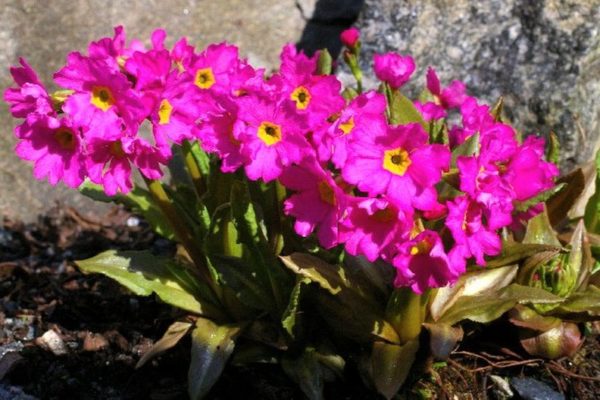

In the pink primrose, flowers of an unusual pink color first appear, and then serrated leaves that form a basal rosette.
Grandi flora
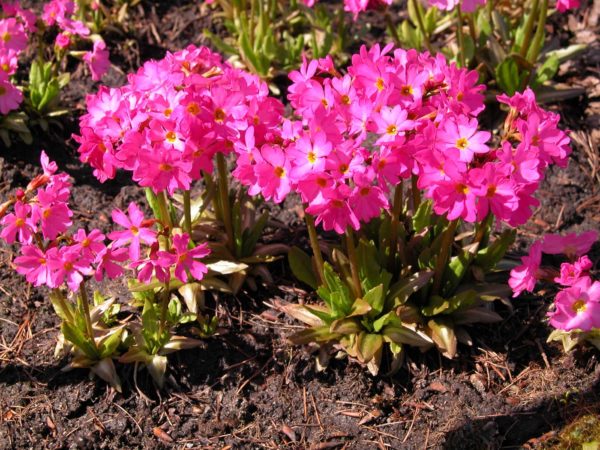

Large-flowered variety of primroses... Feels good on peat soils and near water bodies.
Spring


Umbrella inflorescences of this primrose can have white, yellow, cream, pink, purple petals.
Types of room primrose with photo
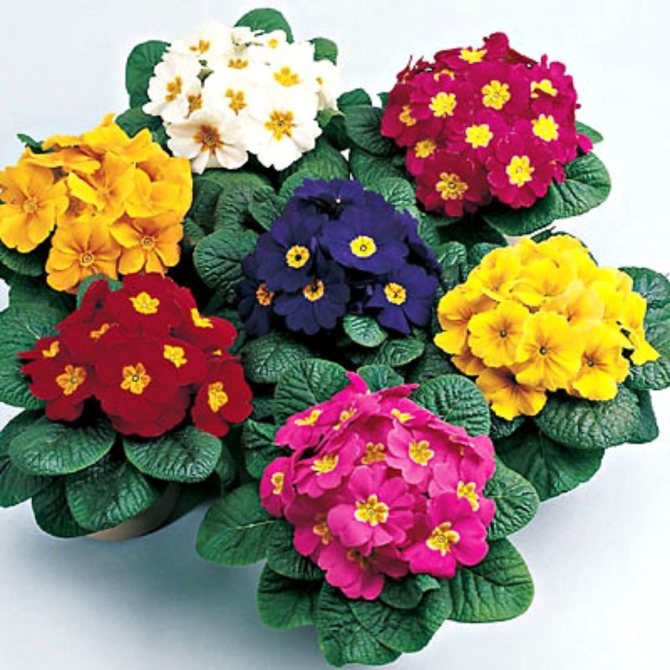

Most garden primrose species tolerate cold and thrive outdoors, but indoor plants require special care.
The work of breeders does not stand still, due to which new hybrid varieties appear, adapted for growing both at home and at their summer cottage.
Indoor primrose types include:
- Primula malacoides, or soft-leaved primrose.
- Primula obconica, or reverse conic primrose.
- Primula vulgaris, or stemless primrose.
- Primula kewensis, or kyurskaya primrose.
- Primula chinensis, or Chinese primrose.
Primrose soft-leaved
The second name is softish (delicate) primrose. This is a plant with densely spaced jagged leaves and high peduncles, the number of which can reach eight pieces. It is characterized by abundant flowering from the beginning of winter to the first days of spring.
On one primocet, you can count up to 45 buds, the size of which does not exceed 1.5 cm in diameter. In the wild, the primrose has a lilac color, but now varieties have been bred with a solid white, pink, red color, or with a combination of these.
The most famous types of soft-leaved primrose are:
- The Snow Queen.
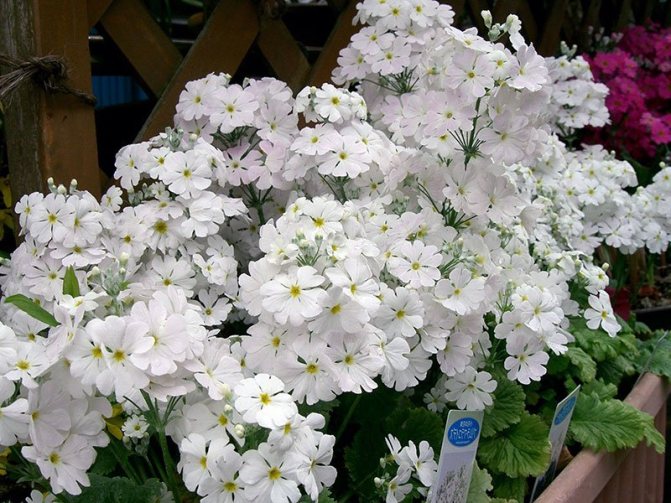

- Juliet.
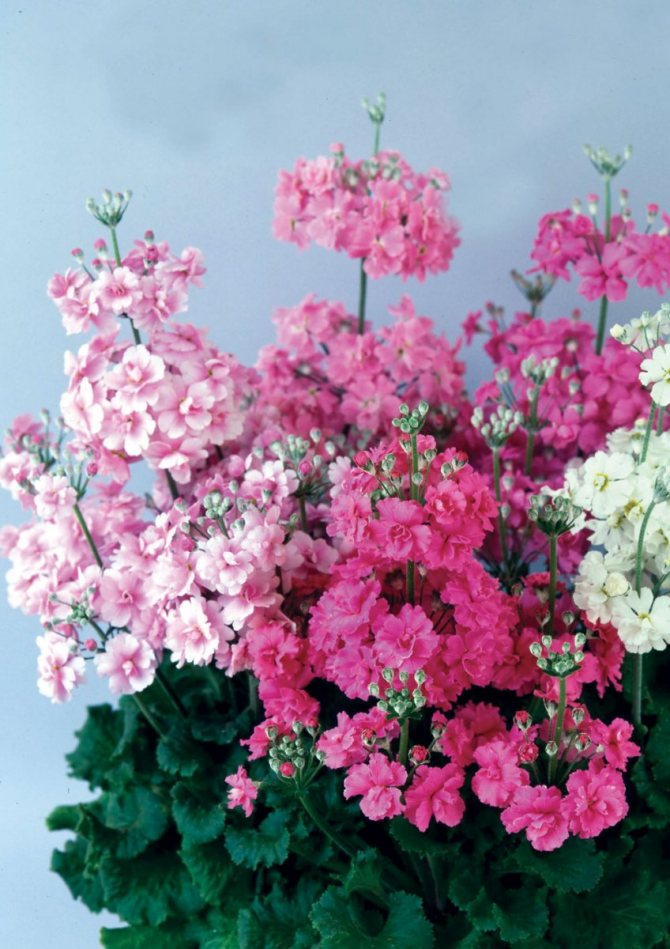

- Mars.
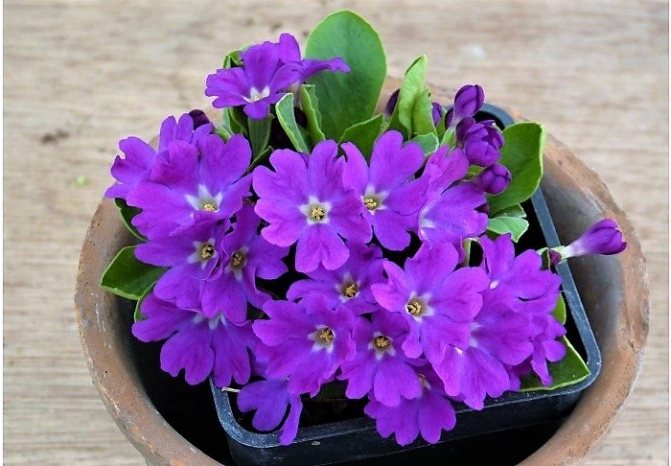

- White pearls.
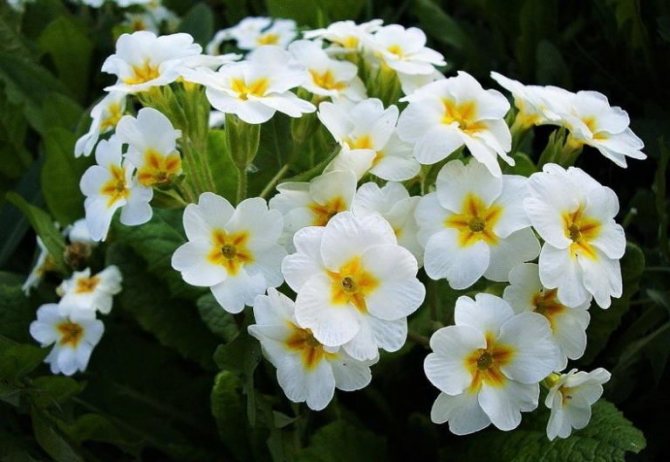

Primula reverse conical
The plant has heart-shaped foliage, above which a peduncle with umbrellas rises in the second tier. Flowers reach 3-4 cm in diameter and exude a subtle scent. The petals come in a variety of shades (white, red, hot pink, blue, and purple), and some have a green heart.
The plant pleases with its flowering from spring to the beginning of winter, and all year round under favorable conditions. Primula obconica is not suitable for all growers, as it contains a substance on its leaves that irritates the skin and causes allergies. But you can find new and hybrid varieties of reverse conical primrose that are safe for allergy sufferers.
Popular varietal series of obkoniki:
- Touch me.
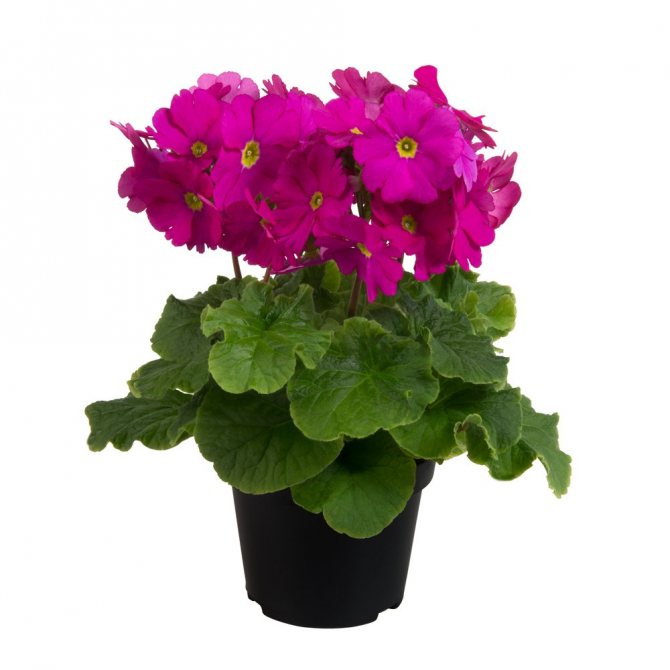

- Grace F1.
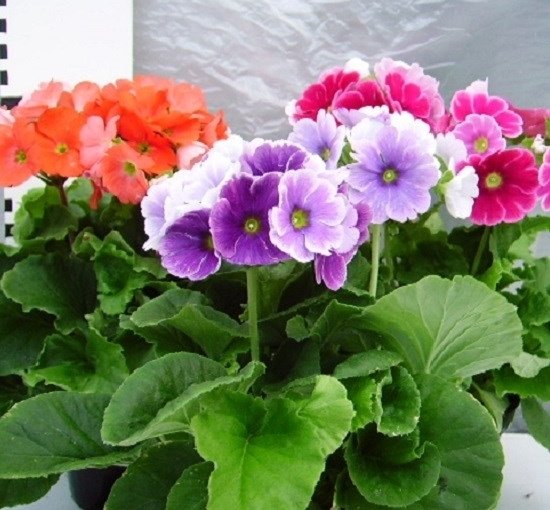

- Libre F1.
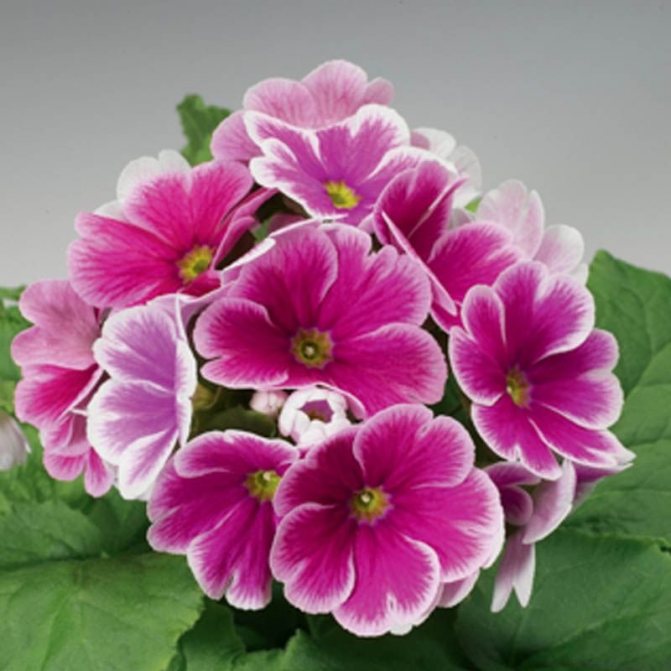

Primula stemless
This primrose is also called ordinary. It is suitable for growing both on the windowsill and in the open field. The common primrose has oval, wrinkled, bright green leaves and large flowers, reaching a diameter of 4 cm.
Blooms from February to late summer. There are varieties with pink, red, orange, lilac colors.
Common varieties:
- Sphinx Apricot.
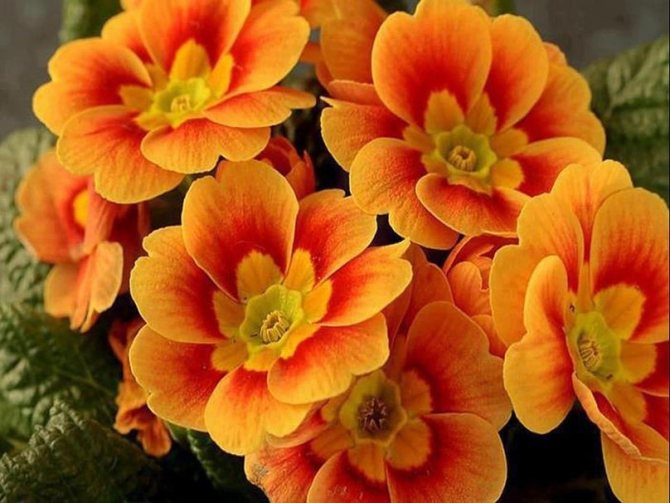

- Sphinx F1 neon Rose.
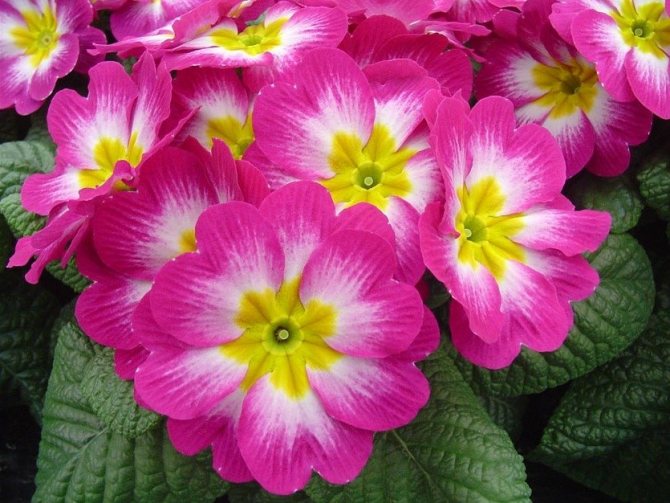

- Eclipse Violet Rose Rim.
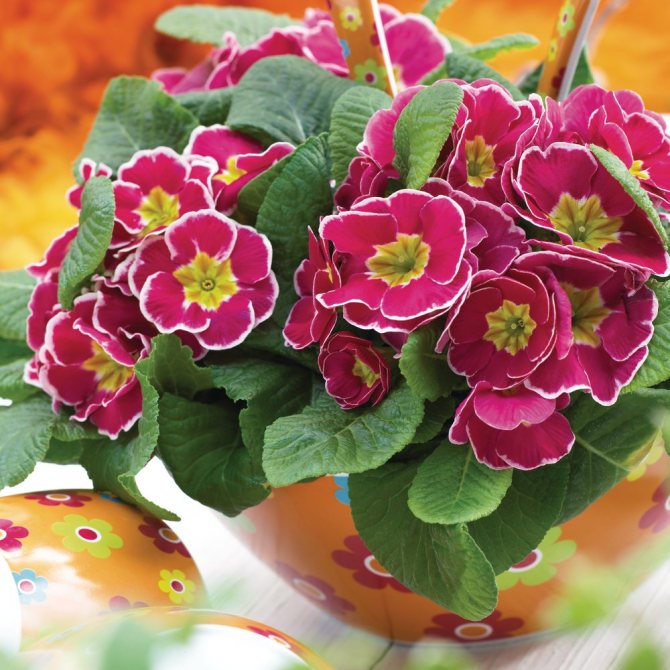

- Pioneer F1.
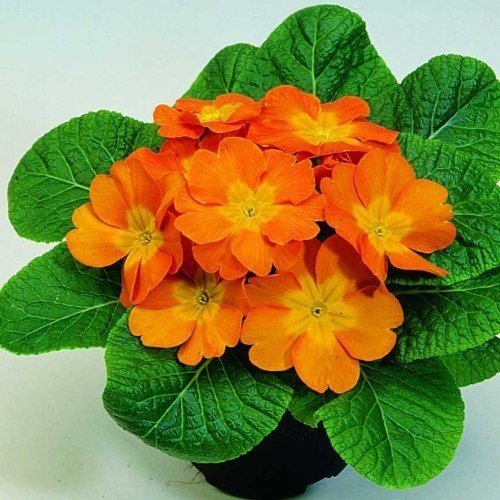

Primrose cue
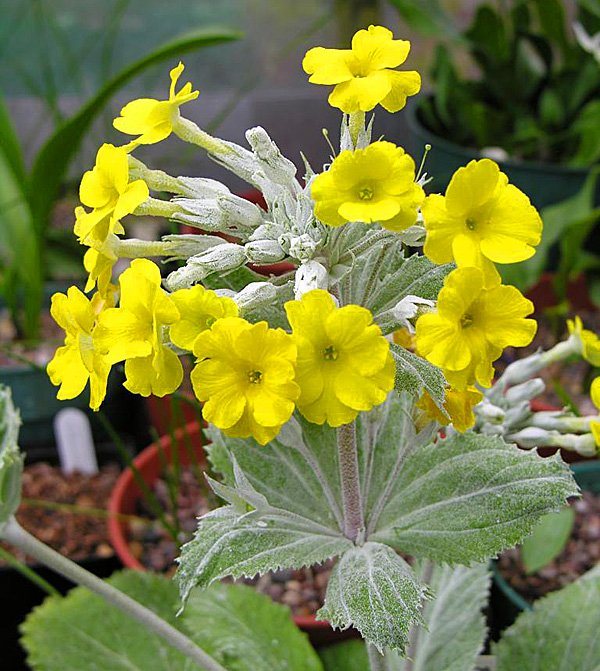

This is a rare species of primrose, although it was bred for indoor cultivation. The plant has green or whitish foliage with jagged edges. The yellow tubular flowers reach 2 cm in diameter and are located on tall peduncles.
Kurskaya primrose is distinguished by long flowering from autumn to the end of winter.
Chinese primrose
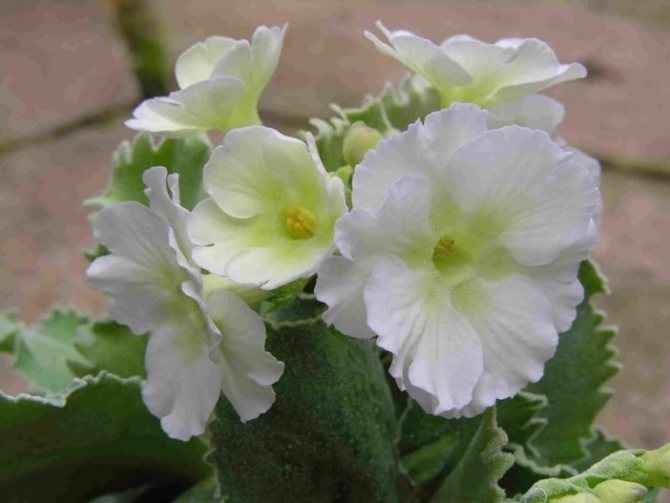

This variety is distinguished by large wavy flowers, collected in umbrella inflorescences. The leaves have serrated leaves, densely covered with fine hairs. Primula chinensis is grown as an annual or biennial, which is associated with the gradual loss of the plant's decorative appearance.
There are many varieties of Chinese primrose that differ in the shape of the flower. They are simple or terry, and some resemble a rose in appearance.
Use in landscape design
Primrose is gaining popularity among landscape designers due to its ease of growing. With the correct selection of the varietal composition, the primrose flower garden will be decorative from mid-spring to the end of summer. Most often, the following objects are decorated with primroses:
- Shores of artificial reservoirs... This is the most suitable place for placing moisture-loving primrose varieties.
- Curbs and paths... Varieties of bright colors look especially organic in this quality.
- Rockeries and rockeries often decorated with primroses due to their undemandingness to the ground and lighting.
Types of primrose for home breeding
A variety of varieties of primroses are divided into garden and indoor. Although the former can be grown as homemade.


The following varieties are popular for keeping on the windowsill:
| Variety | Description | Leaves | Flowers Inflorescence The period of their dissolution |
| Obkonika (Reverse conical) | Height - 20 cm. May cause allergies if touched to parts of the plant. | Elliptical with a serrated winding edge. | Lavender, blue, red, salmon, purple, pink (7 cm). They smell good. Umbrella. All year round (with good care). |
| Soft-leaved (malakoides) | Grows up to 30 cm. | Elongated light green, cut along the edge, the base in the form of a heart. | White, purple, blue, scarlet, pink, two-color terry (4 cm). Paniculata. February-March, lasts 3-5 months. |
Landing
In a home environment, planting primroses requires compliance with a temperature regime ranging from +18 to +21 degrees from spring to mid-autumn. Indoors, during the flowering period of primroses, it is necessary to maintain high humidity.
At home


Seeds are sown in a low spacious container, sprinkled on top with a thin layer of nutritious soil mixture.- Planting is moderately watered and placed in a cool, dark room.
- From above, the container is covered with polyethylene or glass, the plantings are periodically watered.
The first shoots can be observed in 2-3 weeks.... After 1.5 months, the sprouts can be transplanted into pots as independent plants.
Watch a video about planting primrose seeds at home:
On the street
You can plant a plant both in spring (in the last days of May) and in autumn. A shaded area is chosen as a landing site. The soil should be loose, drained and breathable. Large varieties require a planting interval of 25 cm, small ones - 15 cm. There should be no extra space between plantings, primroses prefer thickening.
Read more about the features of planting primroses on the street or at home and further caring for flowers in this material.
Forcing primrose
Some growers are engaged in forcing not only tulips, but also primroses and timed it to coincide with calendar holidays. Primrose can be made to bloom by March 8 or by Easter, it all depends on desire and time.
In order for the forcing process to proceed optimally quickly, for this, plants are chosen that are 2 years old.... You can also take older sockets that were used for breeding.
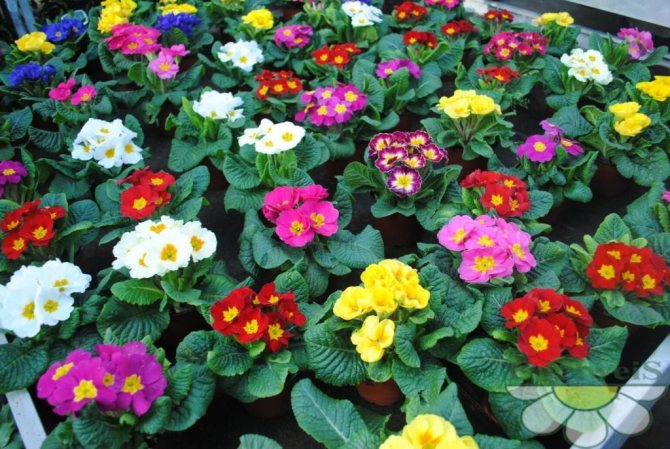

Forcing primrose for the holidays. A beautiful bouquet with lilac, blue, white, cream, pink and crimson flowers can please your beloved woman
- Since autumn, primrose is dug from the flower bed, loaded with a lump of earth into a pot or container and brought into a cool room.
- Can be stored in a greenhouse, basement or right on the street, giving them a good shelter from dry foliage and spruce branches.
- The storage temperature should not be lower than + 4-6 ° C.
- Providing plants with a warmer winter will start vegetative growth and foliage cannot be contained.
- Due to the lack of light, all the greenery will be elongated and lethargic, which will affect the decorative appearance of the plant.
- From such specimens, it will hardly be possible to wait for flowering. During wintering, it is not worth watering the plants.
- When daylight hours increase significantly, the primrose is transferred to a warm room and placed in a well-lit place.
- It is preferable to perform these works in the last days of January or in the first ten days of February. The room temperature should not be higher than +18 ° C.
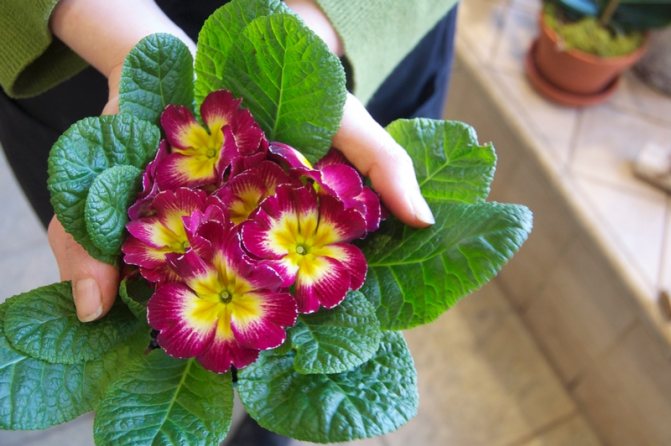

There is a beautiful intermittent border along the edges of the petals. It seems as if water droplets are hanging on the edge of the flowers.
After the plant is brought into the house, you need to give it some time to adapt to new conditions, and then gradually resume watering.
Depending on the type and variety of primrose, flowering begins at different times. Some varieties bloom very early, the first flower stalks may appear on the plant as early as February. Some of them bloom in early March, others may only bloom in April.
You can extend the flowering of primrose when kept in an apartment at a temperature of +15 ° C. You can even lower it.
After the plant has faded, it is recommended to take it to a cool room, but with sufficient lighting. Until spring, it is recommended to water the flower moderately in order to preserve it until the opportunity to transplant it into the open ground comes.
Planted primroses in the garden adapt quickly. For re-distillation, they can be used no earlier than after 2 years.
back to menu ↑
See also: Carnation - a perennial garden plant: description, types and varieties, methods of growing and reproduction, planting and care in the open field (60+ Photos & Videos) + Reviews
Features of caring for a houseplant
For a home primrose, certain conditions must be organized:
- Nutritious, loose, breathable soil.
- Bright but diffused color.
- Cool during bud formation.
- Additional air humidification.
- Constant maintenance of the earthen coma in a moist state.
- Top dressing in the period preceding flowering.
Watch a video about caring for room primrose:
Seed storage
It is important to store purchased seeds only for the recommended shelf life, after their germination will be reduced to zero. Purchased evening primrose seeds are the preferred option as they do not have to worry about their viability. Do not allow low temperatures or excessive humidity in the place where the seeds are stored.
Primrose at home - care features
The most common for home conditions is obkonika primrose. As you can see in the photo, the "bunch" of this variety looks very nice and can have different colors. In caring for room primrose, it is important to properly maintain the temperature, light and moisturizing conditions. If you allow the plant to feel comfortable, it will delight you with a beautiful and long flowering, as in the photo.
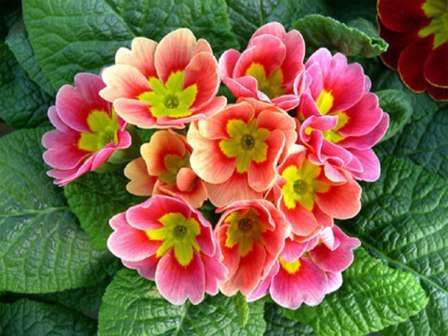

In the photo primrose obkonika
Primrose needs special care during the flowering period. Anyone who has acquired an indoor primrose, it is important to understand that this plant can be a potent allergen. Just in case, it is better to limit the access of small children to it.


In the photo, the primrose is indoor
Moving
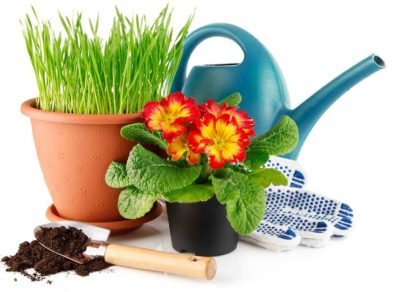

A young primrose requires a mandatory annual transplant, with getting rid of the old soil, an adult plant - once every 2-3 years. When transplanting, the plant is not buried. The socket must remain on the surface. The main method of transplanting primrose is transshipment, thanks to which the fragile root system is practically not injured. The transplant can be combined with the separation of young shoots. It is carried out in late September - early October (learn about transplanting and caring for garden primrose in autumn here). Watch a video about the correct primrose transplant:
Growing problems, diseases and pests
When waterlogged, primrose can get sick with root rot. Its first signs will be yellowing of the leaves and the beginning of decay of the root collar. Soon the plant will rot at the root and die.
Of the pests, the spider mite can deliver problems, which covers the leaves and shoots with a thin cobweb. Soon the green part of the bush begins to turn brown and dry. The insects themselves are located on the back of the sheets.
How to deal with them
Affected leaves and shoots are removed. If the plant is neglected due to rot, you will have to get rid of it completely.
For pests, insecticides are used, preparations with which the bushes are treated. You can wash the leaves with soapy water under warm water.
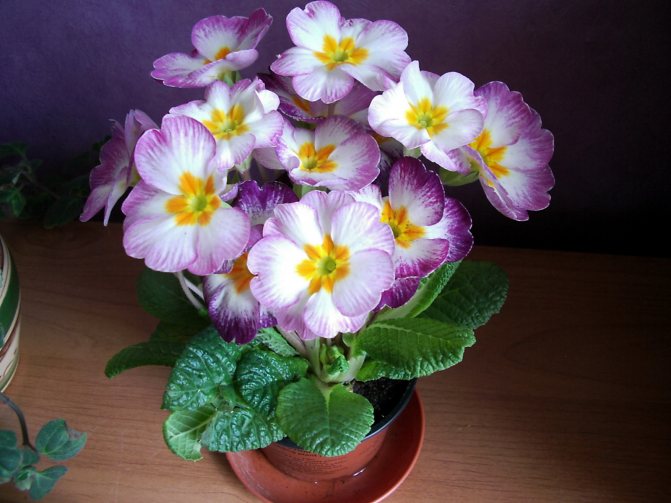

Primrose fits perfectly into the home interior
An abundantly flowering primrose, the care of which will not cause much trouble, will ideally fit into any indoor flower arrangement or a summer garden. The plant has a different color of inflorescences and a beautiful shape of leaf plates. In addition to its decorative appearance, it also has healing properties.
Reproduction
To get new primrose bushes, the following methods are suitable:
- Sowing seeds - provides for the use of high-quality planting material. Sowing takes place at home, followed by transplanting the shoots, if necessary, into open ground.
- Socket division - the most popular way due to its simplicity. For reproduction, it is enough to divide the primrose bush into groups or rosettes with a knife.
- Rooting - represents the immersion in the ground of a cutting with an axillary segment bud.
For more information on primrose breeding and subsequent care, read this article.
Flower reproduction methods
The most convenient and widely used primrose propagation methods are considered to be the separation of the bush and sowing seeds.
Reproduction by dividing the bush
Indoor rose - how to care, reproduction
In the spring, you need to separate the stable and healthy side shoots from the mother bush. Place them in a box with substrate and cover with plastic wrap.
You need to wait for each shoot to take root, then transplant it into separate pots.
Important! Before and after planting, it is imperative to disinfect garden tools.
Seed propagation
Seeds are planted in mid-summer in a wide box. First, the soil is moistened and planted shallowly into the ground. The box is covered with foil and placed in a shaded room. The temperature should also be moderate, in the range of 14-18 degrees.
When shoots appear, they can be transplanted in separate containers.


Primrose diseases
Germinating seeds
Using seeds as planting material, flowering can be expected only five months after germination. Primrose bushes grown from seeds are no different from mother plants.
Advice: If you plan to grow a flower at home, you can stop at the seeds of common primrose.
In addition to seeds, a soil mixture of the optimal composition is selected.... Containers with crops are placed in a cool room with a temperature not exceeding 10 degrees.
Learn more about breeding a herbaceous beauty from seeds here.
Growing from seeds
Despite the fact that today there are many well-known primrose varieties on sale in the form of a pot culture, many prefer independent cultivation from seeds.
This makes sense if you already have some experience in floriculture and seed handling in particular. Good seed is important. Basically, annual primroses are grown in this way.
Sowing time depends on the variety. This is usually April - May. Seed planting is carried out in the following way:
- pour the prepared soil into a shallow container. This can be a mixture of equal proportions of deciduous earth and sand, prepared with your own hands, or "Universal Soil" bought in a store;
- moisten the soil;
- the seeds must be evenly poured and sprinkled on top either with a thin layer of earth, or put glass;
- the container is placed in a well-lit but cool place;
- after the emergence of shoots (after about 1.5 - 2 weeks), the glass must be removed.
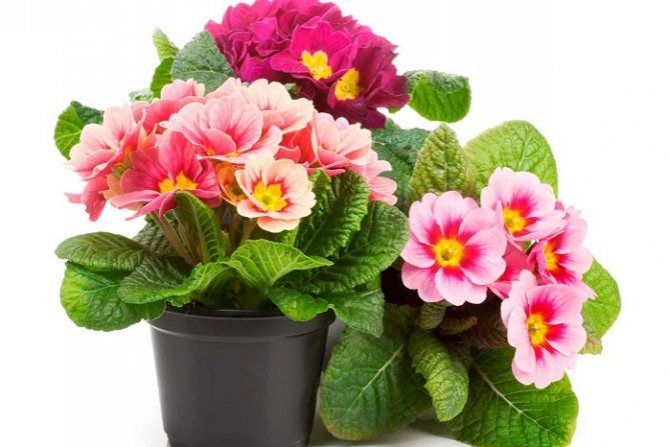

Next, you need to maintain a cool atmosphere, water the seedlings as needed. If the primrose has sprouted densely, it must be planted when it gets stronger. Already grown 3-month-old seedlings are planted in separate pots.
Useful properties, use in treatment and contraindications
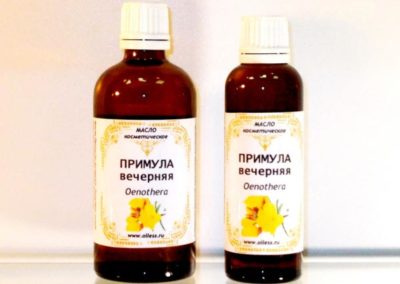

Evening primrose oil is used to treat bruises, wounds and burns.- Decoctions of the plant are taken for rheumatism and headaches.
- The roots of the plant have a diuretic and diaphoretic effect, increase the secretion of the stomach, and activate metabolism.
- Tea is made from dried flowers to strengthen the immune system.
- The British eat young primrose leaves as a salad, and the roots are used as a spice and as a medicine for tuberculosis patients.
The use of any preparations based on primrose requires prior consultation with a doctor.... Contraindications for the use of primrose are:
- pregnancy;
- the presence of peptic ulcers;
- individual intolerance.
Reproduction by dividing the bush
There is another way to get new primrose bushes - propagate by dividing the bush. The plant should be intact and completely faded. It is advisable to choose a 3 year old bush. It needs to be put in a dark place, but do not forget about watering.
When the stems begin to grow, you can start dividing:
- prepare 2-3 containers or pots for young bushes, fill them with a mixture of peat and sand;
- water the mother plant first, wait until the moisture saturates the ground well, and then carefully remove the bush from the pot;
- the bush is divided into parts so that each of them has a well-developed root system and a growth bud;
- all that remains is to plant new bushes in pots and cover them with glass, placing the pots in a bright but cool place.
- after 3-5 days, when the plants take root, you can remove the glass.
Further, as necessary, they need to be transplanted into larger pots. It is important not to forget about the dressings that need to be done every fortnight. Complex mineral fertilizers are suitable for this.
Diseases
Let's consider the main diseases of flowers and their causes.
- Gray rot - occurs in conditions of excess moisture, manifests itself in the form of weeping spots on the leaves and a gray bloom. Fungicides will help fight defeat.
- Ramulariasis - occurs when the plant is kept for a long time in conditions of cold and high humidity. It is characterized by the appearance of light yellow spots on the leaves, followed by the formation of holes in their place. Fungicides are used to fight the disease.
- Leaf spot - occurs in conditions of high humidity. Brown spots appear on the leaves. The affected leaves must be removed, the soil must dry out and the plant must be treated with insecticides.
Plant diseases
Primroses have strong immunity. Failure to comply with agrotechnical recommendations leads to the appearance of diseases in room primrose. With abundant moisture, rot appears on various parts of the plant. Fungal infection is manifested by the appearance of brown spots and plaque. The buds dry and fall off. The flower is treated with fungicides. Affected leaves are destroyed. Common diseases include:
- spotting;
- root rot;
- powdery mildew.
Indoor primroses rarely infect insect pests. One of the few enemies of the flower is the spider mite.
Perennial garden primrose - description
Primrose has round or oval leaves, the edges of which can often be in the form of lobes or denticles. The diameter of the leaves is about 10 cm on average.
Flowers can have a variety of colors - both monochromatic and variegated, consisting of several shades. Primrose flowers are star-shaped in shape, and their size does not exceed 3 cm. They are collected in capitate, whorled or umbellate inflorescences. The plant blooms most often in early March, but there are repeated flowering until autumn.
The fruit is a capsule, the seeds are extremely small, in the form of a cylinder or a ball, the color is dark, with a brownish tint.
The garden primrose also has one more characteristic that gardeners must know: the plant sap is poisonous and can cause allergies, therefore, you should handle the primrose carefully - it is better to wear gloves.
Primrose is often grown in containers, boxes, or flowerpots. But, no matter where this garden perennial grows, it will always delight you with its bright and variegated flowers associated with the beginning of spring.
What does primrose look like?
The primrose flower is a herbaceous perennial plant belonging to the Primrose family. The leaves are painted in gray-green shades, often monochromatic. They have the shape of an elongated oval that tapers downward. Depending on the variety, the edges of the leaves are even or serrated, the surface is smooth or embossed. The leaves are covered with fine nap, soft and slightly fluffy to the touch.
The height of the flowering stem usually does not exceed 25-50 cm; a bunch of leaves grows at its base, which is placed on top of the soil. At the top of the peduncle is an umbrella-shaped inflorescence, which consists of a group of flowers. There are varieties with a short stem and single flowers. Flowers can be colored yellow, purple, white and red, as well as pink and lilac shades. The petals can be monochromatic or variegated, the core of the flower is often yellow.
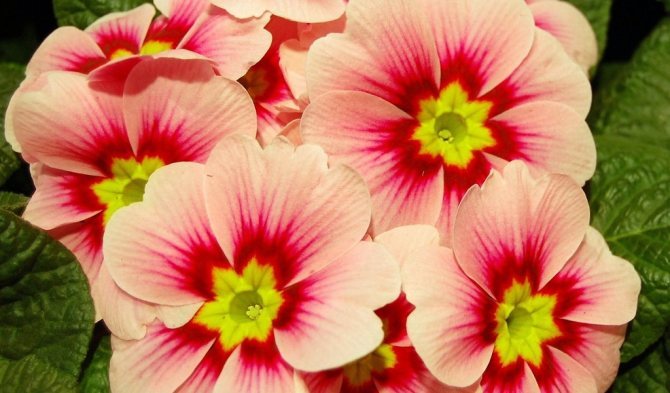

Pink flowers
Note! Primrose is not only an ornamental plant, its leaves can be eaten. They contain a large amount of vitamins and carotene. Primrose leaves contain more ascorbic acid than lemon. The leaves are suitable for making salads, they are added to soups and stews.
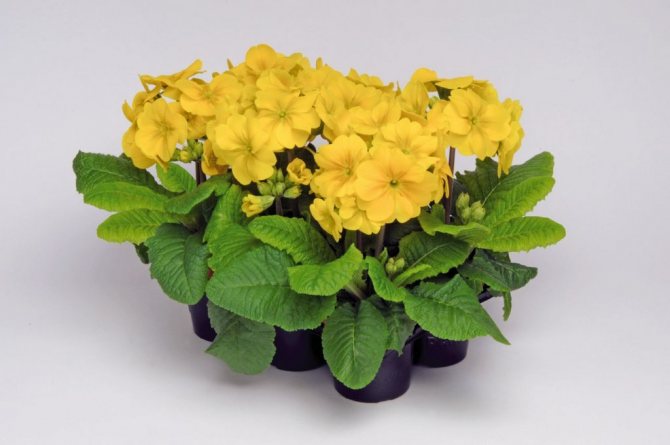

Flower in full growth
Distillation
During forcing, primroses are transplanted into more favorable conditions to accelerate their growth and development. it allows you to get flowers faster, but at the same time the depletion of roots and stems occurs, and therefore the flowers will need a long - up to 2 years - recovery and rest. For distillation, garden primroses are used, which are more than 2 years old.
- Before freezing, primroses are dug up and, together with the soil adhering to the roots, are transferred into separate containers.
- They are stored in dark rooms at a temperature of no more than 8 degrees, without watering: under warmer conditions, they will begin to grow actively, and flowering, on the contrary, will slow down and come much later.
- Then, at the end of January, the containers are transferred to a lighter room and the temperature is raised, but not more than +18 degrees, while they are slowly watered.
- With this method, flowering begins by the beginning of spring. Forcing is often used to get the first flowers by March 8th.
- After flowering, the primrose should be transferred to a cool, bright place and watered regularly. After 1–3 years, it can be used again for distillation.
Temperature
The optimal temperature for primroses in winter and spring, during the flowering period, will be 10-15 degrees. If the temperature rises higher, this negatively affects the flowering: the flowers can quickly fall off, and the flowering period itself is greatly reduced.
An exception is the type "reverse conical primrose" - it is thermophilic, and it needs a temperature of 16-20 degrees for normal development.
After flowering, it is recommended to take the primrose out into fresh air.: on the loggia, balcony or drop out into the garden. It is important to choose a shaded place. With the onset of cold weather, the primrose returns to the house or apartment.




